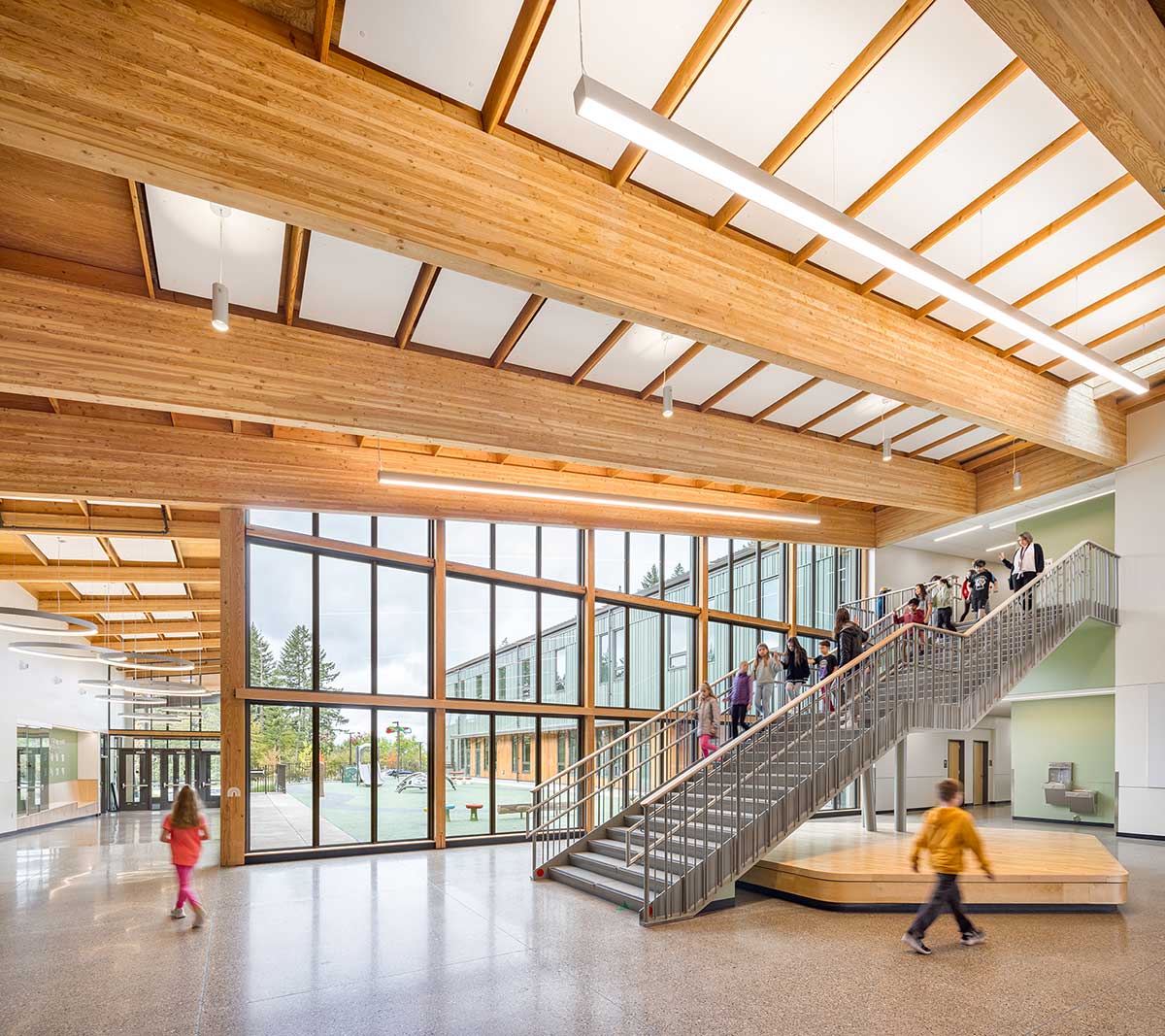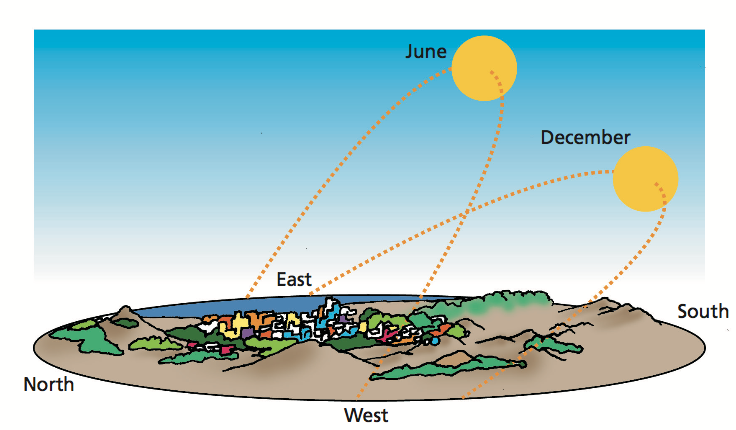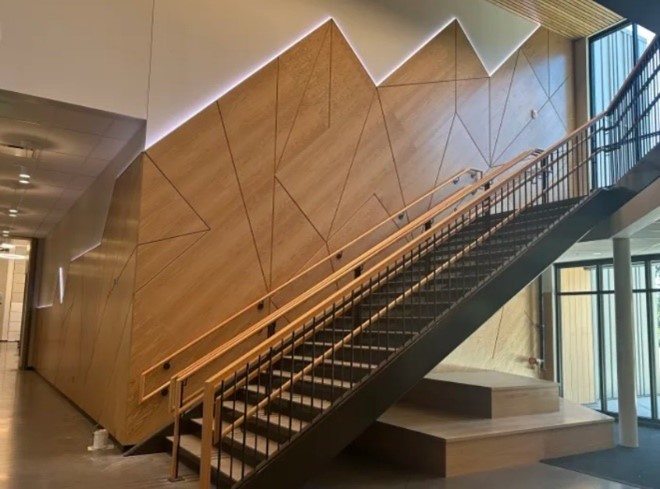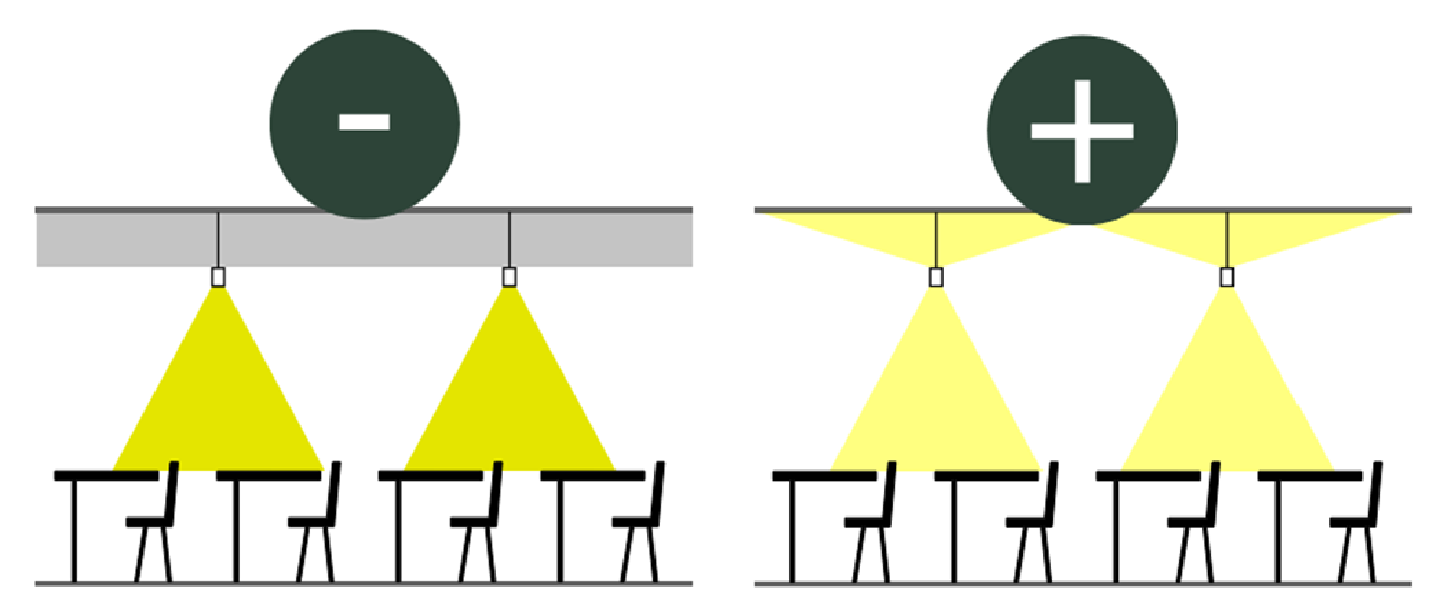The battle for students’ attention in K-12 spaces is an enduring struggle. If you’re feeling like phones, social media, and a constant stream of content are making student attention spans shorter, you’re likely on to something.
Bad lighting isn’t helping either.
Thoughtful lighting design, with a particular focus on natural light, has demonstrated significant positive impacts on learning outcomes. And access to daylight has been shown to increase mood and attention levels. We’ve written before about the concept of circadian lighting and its impact on occupant well-being and performance. And some of its most apparent impacts come in the K-12 space, where studies have shown that exposure to daylight allowed students to finish math tests 20 percent faster and finish reading tests 26 percent faster.
But there’s more to getting good lighting than simply poking holes in the façade.
It’s safe to say that architects, school administrators, and lighting designers want windows and skylights in classrooms and adjacent learning spaces for their obvious benefits. However, this is rarely achieved through simply poking holes in the façade for large windows. How often have you sat in a hot conference room in the late afternoon as the sun beats down through the windows? To get this right, there are many geographical, meteorological, and spatial considerations to explore related to this during design, including:
- Distraction Free Daylight: It may be more effective to utilize clerestory windows or skylights in a classroom adjacent to a busy playground to avoid distraction.

- Seasonal Considerations: Glare may become a larger issue in the winter when the angle of the sun is at its lowest, and so sheer and/or blackout window shades can help minimize glare. These shades can be controlled manually or may be electrically powered and controlled in tune with the lighting control system.

Like these examples, there are many other factors to consider making it crucial for all parties to work together to come up with an effective daylight design strategy.
The color temperature that we get from our electric lights is often fixed, which differs from the dynamic nature of daylight. *White color tuning (also called tunable white or dynamic white) alters the intensity and spectral content of light to change the color from warm to neutral to cool in appearance. This can stimulate or suppress the secretion of melatonin, which impacts our mood, alertness, and overall health. Typically, we want our electric light to mimic the sun as much as possible. But given that the day-to-day activity in a K-12 space often extends well into the late afternoon, we may find it effective to vary color temperature a bit to have extended hours of alertness.

Picking out electric lights is more than just about aesthetics. We generally want our luminaires to blend into and compliment the architectural design. In learning environments, we operate under the guiding principle of “less visual noise, the better.” Lighting in a classroom setting should be integral to and balanced within the architecture, with the goal of achieving a uniform, glare-free experience. In some cases, though, we instead want to showcase our lighting as feature pieces and create “wow” moments. In yet other instances, the two can go together. Lighting can enhance what is already a wow moment architecturally.
A section on lighting design strategies would never be complete without a note about safety. Lighting has been and will continue to be used to make building exits obvious and easy to find, to enhance wayfinding of other spaces, and to make our building occupants feel safe.
Lighting Design Strategies & Incentives
Classrooms benefit from having less visual noise and more uniformity – essentially less distraction. One common lighting design strategy is incorporating indirect/direct lighting from suspended linear fixtures.

Luminaires like the ones above should have a low Unified Glare Rating, a common measure of potential discomfort glare experienced by an occupant. Teaching walls sometimes want more light from a dedicated light fixture, but it becomes important to position these lights to avoid glare, especially if the teaching wall includes reflective whiteboards. Some classrooms in K-6 schools might have a “chill-out zone”, which allows for a bit more play from a decorative light fixture standpoint. Incorporating white color tuning can also be an added benefit.

Extended learning areas, often located adjacent to classrooms, create opportunities to change up the design scheme making it more playful or fun. One recommended strategy that Glumac focuses on is biophilic design, which is the practice of bringing elements of nature into the built environment, and making lighting a key component to complement the design.
Sensory rooms and quiet rooms seek to silence and calm the minds of all students, not just students with a learning disability. Changes to environmental conditions can benefit all students and have a big impact on their well-being. White color tuning, RGBW color tuning, and dim-to-warm lighting are additional tools that can be used by teachers for this benefit.
Lab spaces often have stringent light level requirements and there may be other safety and cleanliness concerns to adhere to depending on the programming of these spaces.
Corridors can be more practical with simple lights (downlights, architectural troffers, recessed linear) uniformly spaced, or have these same simple lights arranged randomly for more visual variety. Oftentimes, major MEP systems are routed in these corridors, creating a lower ceiling height, constricting the design a bit. Therefore, what’s happening at the walls (lockers, art displays, etc.), can help broaden the lighting design.
Commons often incorporates lots of daylight with much higher ceiling heights. These spaces are a great opportunity to incorporate larger-scale luminaires to create more interest and wow moments.
Site and exterior lighting’s main goal is safety. The lighting should emphasize the building architecture and be effective for any areas used after-hours (i.e. greenhouses, agricultural sheds, etc.). Local municipal codes will often have strict requirements to eliminate light pollution and light trespass. Generally, shielded light fixtures should be used and uplight should be avoided where it cannot be contained with an overhang or eave.
Utility companies offer many incentives when it comes to lighting. Incentives may come in the form of a $/kWh for conservation actions such as retrofit LED lighting or new LED lighting altogether. These incentives are sometimes very easy to achieve with all lighting specified these days being LED lighting. Eligible rebate programs might also include installing occupancy sensors and lighting controls – things we should be doing anyways to meet energy code.
Tomorrow
The schools we’re designing today will be occupied tomorrow and beyond. We want these buildings to foster a learning environment in which our students and teachers can thrive. Reflecting on the wordplay at the beginning of this article, these elements are demonstrated in each space type we’re designing, with the main theme of “daylight” being displayed throughout.
Lighting design fundamentals used in conjunction with what we’re learning about daylight and lighting control technologies makes for a powerful model. The theme of learning needs to not only be emphasized in our schools but for designers as well to continue to illuminate our K-12 schools for a better tomorrow.

